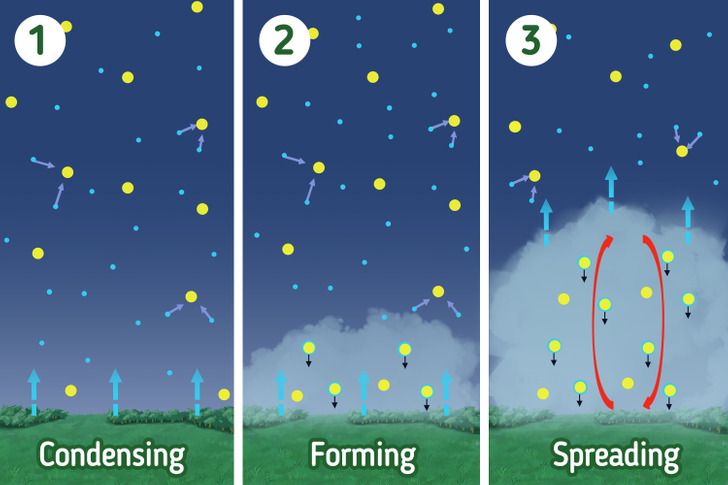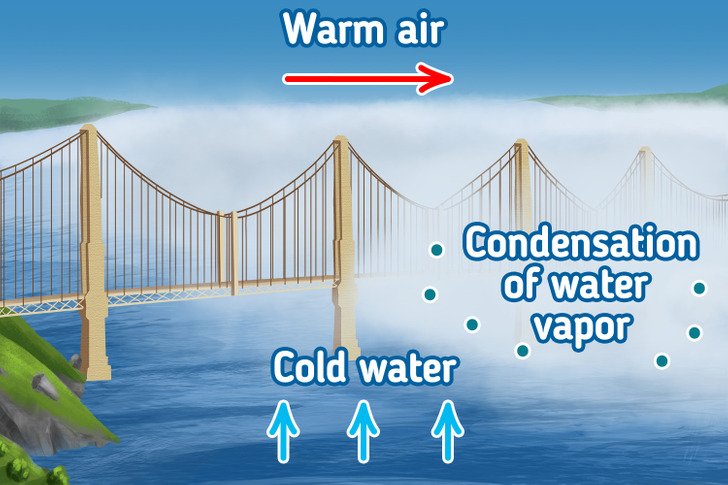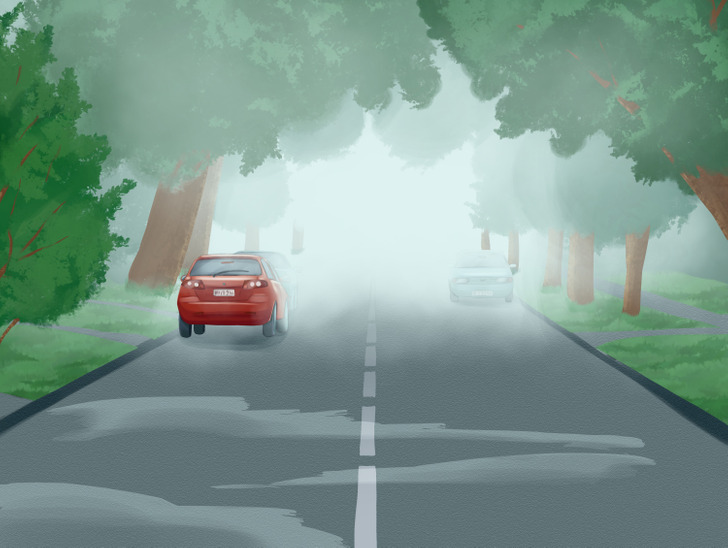How Fog Forms
Fog consists of tiny water droplets or ice crystals suspended in the air on or near the surface of the Earth. It often looks like low-lying stratus clouds. Fog forms due to 3 factors: bodies of water nearby, the topography of the area, and weather conditions.
5-Minute Crafts would like to tell you about how fog forms, what types of fog there are, and whether it’s dangerous to humans.
How fog forms

Fog usually forms at a relative humidity of about 100% when a lot of moisture accumulates in the air. At the same time, the difference between the air temperature and dew point must be less than 4.5°F.
The dew point is the temperature below which water droplets begin to condense and form dew or frost. It’s determined by the relative humidity of the air. The higher the humidity, the higher the dew point, and its value is closer to the actual air temperature. If the relative humidity is 100%, then the dew point is the same as the temperature. Under these conditions, water vapor begins to condense.
During condensation, water vapor molecules combine to form tiny droplets of liquid water that hang in the air. It’s these that make fog visible. Dust or other air pollution also contributes to this, as water vapor condenses around solid microscopic particles. It’s different from sea fog, which appears near the sea or ocean, and forms due to the condensation of water vapor around salt crystals.
Fog often forms in the morning because this is the coolest time of the day when the air temperature drops to the dew point temperature and the relative humidity approaches 100%. However, there are times when the dew point rises to the temperature of the air, but common morning fog forms as the atmosphere cools.
Types of fog

Fog can form in several ways, depending on how the cooling that caused the condensation occurred.
- Evaporation fog forms over bodies of water, usually in fall, when the water temperature decreases more slowly than the air temperature. As a result, when a mass of dry cold air moves over a body of water, warm moist air from the water rises into the cold air mass above it and creates fog.
- Advection fog forms when warm moist air passes over a cool surface and cools. It mostly appears in places where warm tropical air meets cooler ocean water. This type of fog is common in California. You can see it above the famous bridge in San Francisco.
- Radiation fog forms in the evening when the heat absorbed by the Earth’s surface during the day is radiated into the air. When heat is transferred from the ground to the air, water droplets form. Sometimes this type of fog is called “ground fog.”
- Frontal fog forms when raindrops falling from relatively warm air above the frontal surface evaporate into cooler air close to the Earth’s surface. This causes it to become saturated.
- Valley fog forms in mountain valleys, mainly in winter, when the mountains prevent dense air from escaping, and it “gets stuck” in the depths of the valley.
- Freezing fog occurs when fog droplets freeze to solid surfaces. For example, mountain peaks covered by clouds are often covered in freezing fog. When it dissipates, it leaves the ground and trees covered with a layer of frost. The white landscapes of freezing fog are common in cold humid climates in regions like the Scandinavian countries and Antarctica.
If fog is dangerous

Depending on the concentration of droplets, visibility in fog can vary from the appearance of haze to almost zero visibility. With zero visibility, fog is associated with certain risks for humans. For example:
- On the roads, fog can cause car collisions and other accidents. In foggy conditions, drivers are advised to slow down, be extra vigilant, and not use high beams. They make it harder to see since water vapor scatters most of the light back. Instead of high beams, it’s better to use fog lights.
- At sea, low visibility can be disorienting for people steering boats. Like car drivers, they are advised to slow down, turn on all running lights, use radar, and, if possible, stay where they are until visibility improves.
- In the air, low visibility due to fog can be dangerous, even for experienced pilots. In thick fog, safe operations are difficult, and civilian airports may forbid takeoffs and landings until conditions improve.